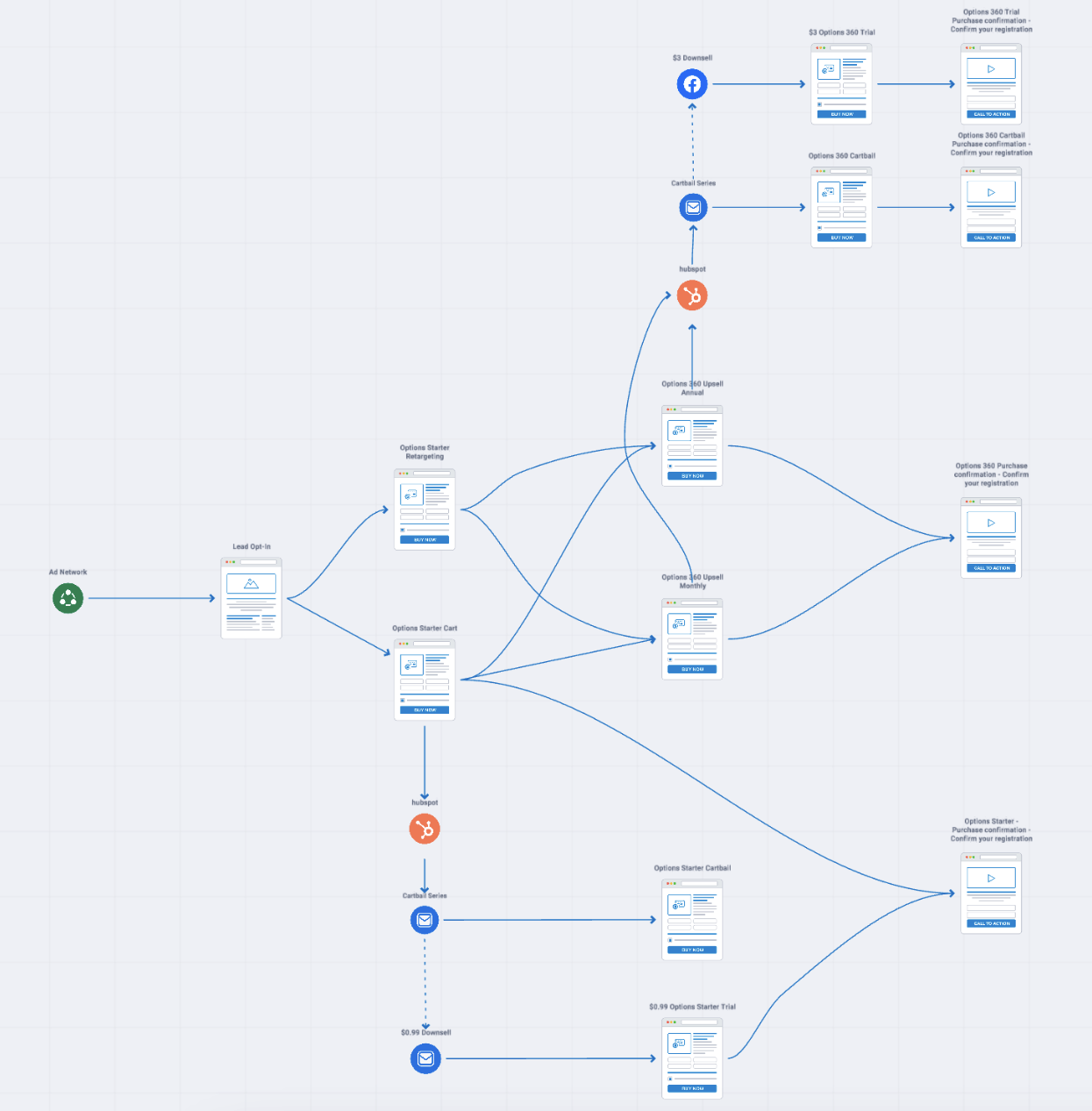In today’s competitive business landscape, top brands understand the importance of a well-structured marketing team. A company’s marketing team plays a crucial role in driving its success by creating and implementing effective strategies to promote its products or services. This article dives into the key elements that make up successful marketing team structures, explores the different models used by top brands, highlights essential roles within marketing teams, discusses the impact of technology on team structures, and provides insights on building and developing a successful marketing team.
Understanding the Importance of Structured Marketing Teams
Efficiently structured marketing teams are essential for a brand’s success. A well-organized team allows for clear communication, collaboration, and effective decision-making. A structured marketing team ensures that every member understands their responsibilities and how they contribute to achieving the brand’s marketing objectives.
But what exactly does a structured marketing team look like? Let’s dive deeper into the role of a marketing team in a brand’s success and explore the key elements of a successful marketing team structure.
The Role of a Marketing Team in a Brand’s Success
A marketing team plays a fundamental role in a brand’s success. They are responsible for developing and implementing strategies to promote products or services, drive customer engagement, and boost brand awareness. By analyzing market trends, target audiences, and competitors, marketing teams can create effective campaigns that resonate with customers and generate revenue.
Furthermore, a marketing team’s role goes beyond conducting marketing campaigns. They also monitor key performance indicators (KPIs) to evaluate the effectiveness of their strategies and make data-driven decisions for future campaigns. Marketing teams also work closely with other departments, such as sales and product development, to align marketing efforts with overall business goals.
Imagine a marketing team brainstorming session where members discuss market research findings, consumer insights, and creative ideas for their next campaign. Each team member brings their unique perspective and expertise to the table, fueling a collaborative environment that fosters innovation and drives success.
Key Elements of a Successful Marketing Team Structure
A successful marketing team structure involves several key elements:
- Clearly Defined Roles and Responsibilities: Each team member should have a clear understanding of their role and responsibilities within the team. This clarity promotes efficiency, prevents duplication of efforts, and ensures effective collaboration. For example, a content writer knows their primary responsibility is to create engaging and informative content that aligns with the brand’s messaging and target audience.
- Effective Communication Channels: Communication is crucial in a marketing team. The team structure should facilitate open and transparent communication to foster collaboration and information sharing. Whether it’s regular team meetings, project management tools, or communication platforms, establishing effective channels is vital. These channels enable team members to share updates, seek feedback, and address any challenges that may arise during a campaign.
- Collaborative Workflow: A successful marketing team structure encourages collaboration among team members. This can be achieved through cross-functional teams, where members with diverse skills and expertise collaborate on projects and campaigns. For instance, a graphic designer, a social media specialist, and a data analyst may work together to create a visually appealing and data-driven social media campaign. By leveraging each other’s strengths, the team can deliver high-quality results that resonate with the target audience.
- Continuous Learning and Development: In the ever-evolving world of marketing, it’s crucial for marketing teams to stay updated with the latest trends, technologies, and strategies. A successful marketing team structure promotes continuous learning and development opportunities for its members. This can include attending industry conferences, participating in online courses, or organizing internal knowledge-sharing sessions. By investing in their team’s growth, brands can ensure that their marketing efforts remain innovative and effective.
- Supportive Leadership: A structured marketing team requires strong leadership that provides guidance, support, and mentorship to its members. Effective leaders empower their team by setting clear goals, providing constructive feedback, and fostering a positive work environment. They also encourage creativity and experimentation, allowing team members to take calculated risks and explore new ideas.
By implementing these key elements, brands can build a structured marketing team that not only achieves their marketing objectives but also fosters a culture of collaboration, innovation, and continuous improvement.
The Different Models of Marketing Team Structures
Top brands employ different models for structuring their marketing teams. The choice of team structure depends on various factors, including the brand’s industry, size, goals, and available resources. Let’s explore two common models in more detail:
Centralized vs. Decentralized Marketing Teams
A centralized marketing team structure involves a central marketing department responsible for all marketing activities. This model provides consistency in messaging, branding, and overall strategy, as all decisions and campaigns are coordinated from a central hub.
Within a centralized structure, the marketing team can efficiently manage resources, streamline communication, and ensure that marketing efforts align with the brand’s overarching goals. By having a central point of contact, it becomes easier to maintain brand consistency and avoid conflicting messages.
On the other hand, decentralized marketing teams distribute marketing responsibilities among various departments or business units. This model tends to be more flexible and allows for customized strategies based on the unique needs of each department or unit.
Decentralized teams empower individual departments or business units to take ownership of their marketing initiatives, tailoring them to their specific target audience and goals. This approach can foster innovation and creativity, as different teams can experiment with diverse marketing tactics and adapt quickly to changing market conditions.
However, it’s important to note that decentralized teams may face challenges in maintaining consistent branding and messaging across the organization. Without a central authority, there is a risk of disjointed marketing efforts and potential confusion among customers.
In-house vs. Outsourced Marketing Teams
Another consideration in team structure is whether to have an in-house or outsourced marketing team. In-house teams are made up of full-time employees dedicated to the brand’s marketing efforts. They offer proximity, deep company knowledge, and better alignment with overall goals.
An in-house marketing team can develop a deep understanding of the brand, its values, and its target audience. They have direct access to internal resources, allowing for seamless collaboration with other departments and a comprehensive understanding of the company’s products or services.
Outsourced marketing teams, on the other hand, involve partnering with external agencies or consultants to handle marketing activities. This model provides access to a wider range of expertise, scalability, and cost flexibility.
By outsourcing marketing activities, brands can tap into specialized skills and knowledge that may not be available internally. External agencies often have experience working with various industries and can bring fresh perspectives and innovative ideas to the table.
Additionally, outsourcing marketing functions can provide scalability, allowing brands to adjust their marketing efforts based on demand or specific campaigns. It can also offer cost flexibility, as brands can choose to engage agencies on a project basis or for ongoing support, depending on their budget and needs.
However, outsourcing marketing activities may present challenges in terms of communication and alignment. It requires effective collaboration and clear communication between the brand and the external agency to ensure that marketing strategies align with the brand’s vision and goals.
As you can see, there are various models of marketing team structures, each with its own advantages and considerations. The choice of structure ultimately depends on the specific needs and goals of the brand, as well as the available resources and industry dynamics.
Essential Roles in a Marketing Team
A successful marketing team comprises various essential roles, each contributing a unique skill set and perspective. These roles work together harmoniously to create effective marketing strategies and campaigns that drive business growth. Let’s take a closer look at some key roles within a marketing team:
The Strategic Role of Marketing Managers
Marketing managers play a strategic role in overseeing the overall marketing operations. They are responsible for developing comprehensive marketing strategies and campaigns that align with the company’s goals and objectives. These professionals possess a deep understanding of the target market and use their expertise to allocate resources effectively.
Marketing managers set clear goals and objectives for the team and monitor key performance indicators (KPIs) to ensure that the marketing efforts are on track. They evaluate market trends, customer insights, and competitor activities to guide team decision-making and make necessary adjustments to the marketing strategies as needed.
The Creative Role of Content and Design Specialists
Content and design specialists are the creative minds behind captivating marketing materials. They are responsible for creating compelling content, visuals, and design elements that resonate with the target audience. These specialists collaborate closely with other team members to develop engaging campaigns across various channels, such as websites, social media platforms, and print media.
Content specialists possess excellent writing skills and a deep understanding of the target audience’s preferences and needs. They craft persuasive and informative content that effectively communicates the brand’s message and value proposition. Design specialists, on the other hand, have a keen eye for aesthetics and create visually appealing graphics, layouts, and images that enhance the overall appeal of the marketing materials.
The Analytical Role of Data and SEO Experts
Data and SEO experts play a vital role in a marketing team’s success. They harness the power of data analytics tools to collect and analyze relevant data, uncover actionable insights, and measure the effectiveness of marketing campaigns. These experts are skilled in interpreting data and using it to make informed decisions that drive business growth.
SEO experts, specifically, focus on optimizing digital content to improve search engine rankings and drive organic traffic to the company’s website. They conduct thorough keyword research, optimize website content, and implement other SEO strategies to ensure maximum visibility in search engine results.
These are just a few of the essential roles within a marketing team. Each role brings a unique set of skills and expertise that contributes to the overall success of the team. By working together, these professionals create impactful marketing strategies and campaigns that help businesses thrive in today’s competitive market.
The Impact of Technology on Marketing Team Structures
The rapid advancement of technology has significantly influenced marketing team structures. With the rise of digital marketing, new roles and responsibilities have emerged. Two noteworthy impacts are:
The Rise of Digital Marketing Roles
Digital marketing roles, such as social media managers, email marketers, and digital advertising specialists, have become essential in marketing teams. These roles focus on leveraging digital platforms and channels to connect with target audiences, increase brand visibility, and drive engagement.
How Automation Tools Are Changing Marketing Teams
Automation tools have streamlined marketing processes by automating repetitive tasks, freeing up time for team members to focus on more strategic activities. Automated email marketing, social media scheduling, and customer relationship management (CRM) software are examples of tools that enhance marketing team efficiency.
How to Build and Develop a Successful Marketing Team
Building and developing a successful marketing team requires careful planning and execution. Consider the following factors:
Hiring the Right Talent for Your Marketing Team
When hiring, focus on candidates with relevant skills, experience, and a passion for marketing. Look for individuals who can thrive in a collaborative and dynamic environment. Effective interviewing, reference checks, and skills assessments can help identify the right talent.
Training and Developing Your Marketing Team
A successful marketing team requires continuous training and development to keep up with industry trends and evolving strategies. Provide opportunities for team members to attend conferences, workshops, and online courses to enhance their skills and stay up-to-date with the latest marketing practices.
Additionally, fostering a culture of learning and innovation within the team encourages knowledge sharing and personal growth. Regular feedback, mentorship programs, and career development plans contribute to the professional growth of team members.
In conclusion, structured marketing teams are vital to the success of top brands. By understanding the key elements of successful team structures, exploring different models, recognizing essential roles, adapting to technological advancements, and investing in team development, brands can build and develop marketing teams that drive their success in today’s competitive market.



